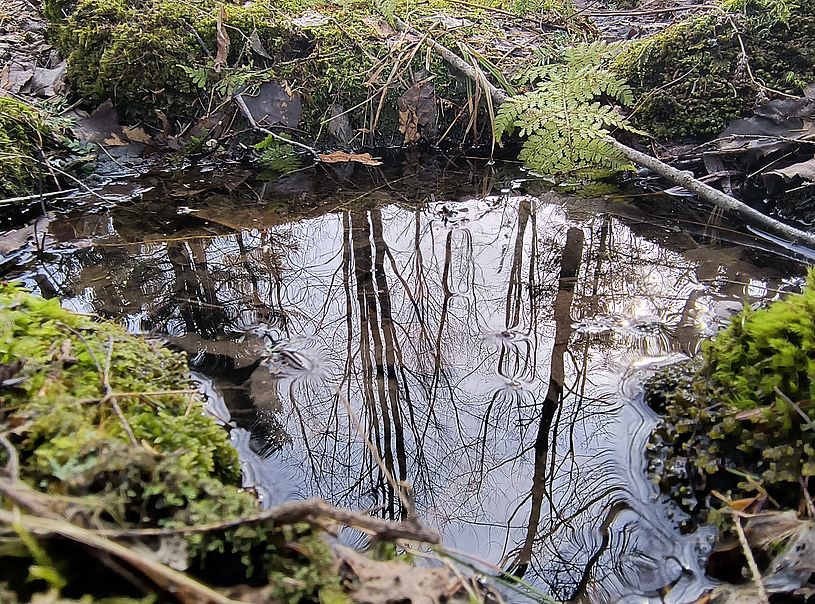Mollusks...in the Forest
by Charlie Hancock
-- detail cover photo taken by iNaturalist contributor breylen

Most of us are familiar with the vast diversity of wildlife which call the Northern Forest—of which Vermont is a part—home. From the wide-ranging mammals like moose and black bear, to the brightly colored songbirds which return to the canopy each spring, to the trout spawning in our upland streams, most of us recognize by sight or by name those organisms we call ‘neighbor’ out in the forest. That is, until we start talking mollusk. When most folks hear ‘mollusk’ their mind wanders to summer lobster boils and beach side clam bakes, which in this case isn’t that far off, since in this instance we’re talking about fingernail clams.
Before we dig into the clams (no pun intended) let’s quickly take a step back and consider the ephemeral spring habitat that Vernal Pools provide in our upland forests. As winter ebbs and temperatures warm, snow melt and spring rains fill depressions within our forests. These can range anywhere from what looks like a large puddle to a small pond, but all vernal pools share one common trait: by early summer they dry up. The ephemeral nature of these pools provides critical habitat for a host of amphibians, like wood frog and Jefferson salamander. These pools are also where you find fingernail clams.
Fingernail clams are small, freshwater clams that are often found in vernal pools. They are named for their size, which is similar to a fingernail. Because of their small size they are often difficult to spot, especially when one is distracted by bulbous slimy egg sacks, quick tiny tad poles, or the cacophony of the spring peeper’s chorus. There are five species of finger nail clam which are commonly found in vernal pools, but Herrington’s Fingernail Clam is the true specialist, restricted only to pools that dry out annually (the other four species can be found in ephemeral pools as well as a variety of other freshwater bodies that persist year round). These little clams extract oxygen from the water through gills and are filter feeders, relying on algae and leaf litter for nourishment. They especially like pools with a calcium rich environment, which is key for shell growth. While relatively small (the largest finger nail clam measures no more than a half inch) they can be incredibly abundant, with some recorded observations of as many as 10,000 per square meter! Finger nail clams only live a few years at most, reproducing late in the spring by creating thousands of eggs. As the pool dries, the fingernail clams burrow down several inches into the soil, where it is moist enough for them to survive until the next spring, though an individual clam only lives a few years at most. Burrowed down in the soil they enter diapause where development is put on hold, becoming active again during fall rains. They then overwinter using the same process. These clams are food for a number of amphibians, small mammals like racoons, and even some bird species. They disperse across the landscape by attaching themselves to amphibians. One monitoring effort documented numerous clams attached to the toes of a Jefferson Salamander, hoping for a lift from one pool to another. The existence of vernal pools in relative proximity allows for genetic exchange. While amphibians that live in a vernal pool rarely move more than 600 feet from the pool, in extreme conditions they can wander several miles looking for functional habitat. In this way, hitchhiking fingernail clams can also then move.
So, this spring when you’re out scouting egg sacks and counting wood frogs, see if you can find some finger nail clams. Even during the off-season—at the height of summer—if you dig around in an area you think may function as a vernal pool you can always rely on these little fellas to provide evidence of the functional habitat, as the presence of fingernail clams indicates that the site is flooded for part of the year. But remember, if you dig them up just make sure to return them to the soil so they can continue their life cycle as an important member of the special natural community.
